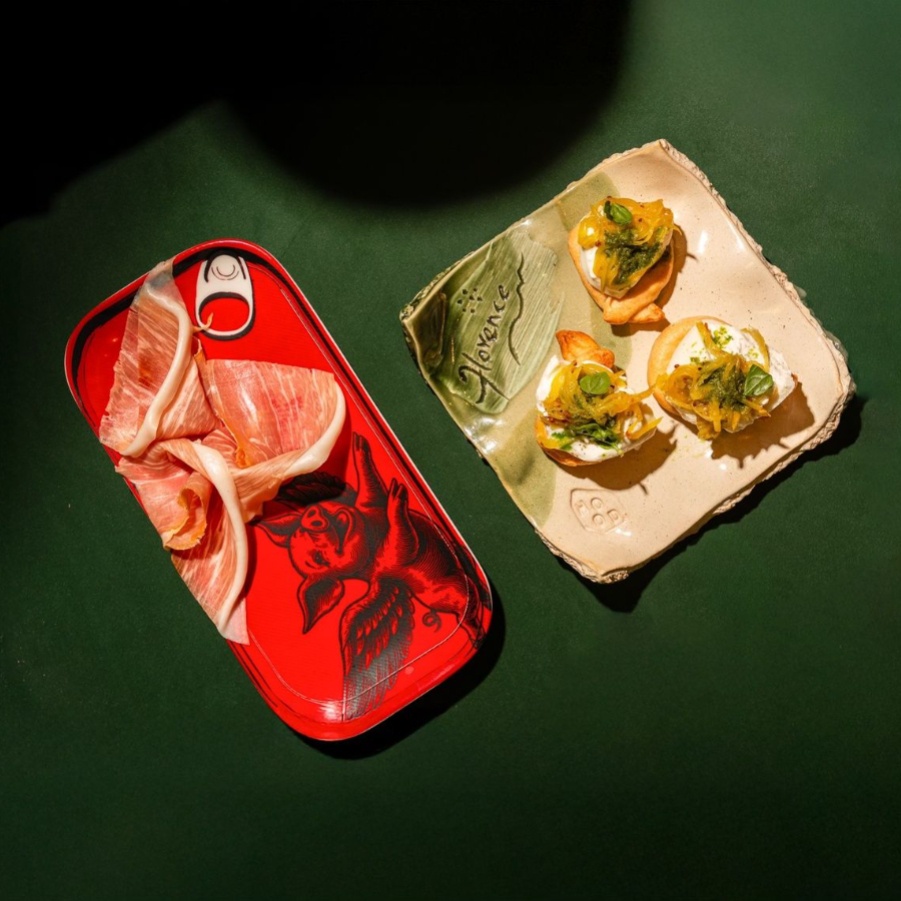For centuries, the mental map of the discerning traveller to Europe has been dominated by the Colosseum, Eiffel Tower, and Brandenburg Gate. But it’s time for an update, and pride of place at this moment belongs not to Rome, Paris, or Berlin, but the Spanish capital, Madrid. Long regarded as somewhat of a country cousin to the more glamorous Barcelona (and free of its tourist hordes), Madrid is undergoing a renaissance that is transforming it into a cosmopolitan hotspot poised at the intersection of the historical and the avant-garde.
Having married a rakish Madrileño I met at university back in the days when Nokia flip phones were cool, I have been coming to the city for a long time. My first visit was in 2004, a time when Madrid was synonymous with smoky bars, surly service and salty clientele. Dustbins were non-existent then, and customers would throw used paper napkins, cigarette butts, and olive pits on the floor, and every hour or so, someone would come sweep it up. Menus too were limited, and a vegetarian was viewed as an exotic pest.
Fast forward to today and Madrid has emerged as one of Europe’s more sophisticated centres of culture, albeit with a naughty side. I often judge cities by how many women are loitering in public spaces, and one of the best things about Madrid is the abundance of white-haired older women, hanging out in cafés with friends, laughing and quaffing vermouth. It’s almost impossible to be depressed in Madrid; there is an infectious energy on the streets you simply can’t resist. The days are suffused with art, and the nights rock on until daybreak. Step out of your hotel, and you’re part of a non-stop fiesta. Curbside cafés are always packed, and long, wine-fuelled lunches last late into the afternoon. Almost everywhere you go, there’s an unforgettable experience just waiting to happen—and here’s an itinerary to help get you started.

The best place for perfectly oozy tortillas
My favourite market is Mercado de la Paz, tucked away in the upscale neighborhood of Barrio Salamanca. It is home to the tiny Casa Dani, which serves the city’s best tortillas, certified by connoisseurs to have just the right amount of ooze when you cut into them. Paz is also blessedly free of the hordes that invade Mercado de San Miguel, which has become an overcrowded tourist trap. Battalions of tapas hunters throng San Miguel all day, elbowing each other in a bid to grab toothpick speared pintxos, in scenes that rival the hubbub of a Mumbai train station.
A meal with a view to prebook
The rooftop bars and restaurants along Gran Via offer not just food, but views of sunsets in Impressionist palettes, underscoring the local saying: ’De Madrid al cielo’ (From Madrid to the sky). I particularly like Azotea del Círculo (where I brought in my 46th birthday!) on the roof of the Círculo de Bellas Artes, but you need to book in advance.

Besides great cocktails, Azotea del Círculo, a rooftop bar, offers a 360-degree view of Madrid
A local delicacy you can’t miss
Think Spanish food, and tapas—shareable bite-sized small plates—immediately spring to mind. Among the best places to get your tapas fix are the city’s fresh food markets. Here you can buy high-quality produce directly from butchers, fishmongers, and cheese sellers, plus sample the greatest hits of Spanish snacks—tortillas de Patatas (omelette with potatoes), bocadillos de calamares (squid sandwiches), gambas al ajillo (shrimp in garlicky olive oil), manchego cheese and patatas bravas (fried potatoes in a spicy tomato sauce). And reigning above all of these, is jamón—cured ham cut by hand from a leg of pork, a product that rivals bullfighting for the title of a Spanish icon.
The place to take fussy vegetarians
Given the ubiquity of jamón, which, in Spain, is used as a culinary garnish much like Indians use coriander leaves, Madrid can be a little difficult for vegetarians. But like in the rest of the world, there is an increasing number of vegan restaurants springing up, like Mudrá, the Spanish outpost of American celebrity chef Matthew Kenney. Mudrá is all about surprise—think chicken tikka ravioli with not even a whiff of an animal product. One traditional eatery that those of all gastronomic proclivities must try is El Cisne Azul. This unfussy hole-in-the-wall, tucked away among the narrow streets of central Madrid, boasts the best seasonal mushroom dishes to be had in the city. Period.

Mudrá is a Michelin-starred plant-based restaurant
A contemporary cuisine that Madrid does best
The city is also emerging as a bastion of innovative chefs who are elevating traditional cuisine with modern twists. Of note is the abundance of Nikkei restaurants, serving up a fusion cuisine that deftly blends Peruvian and Japanese elements. So you’ll have sashimi, but paired with aji and lime instead of soy sauce and wasabi. Ponja and Quispe are two must-visit restaurants, and both are excellent.
A cocktail bar you’re unlikely to forget
Almost every alley and avenue of Madrid is chock-a-block with bars and cafés. But there is one street in particular that is worth any self-respecting mixologist’s time: Calle Ponzano, in the Chamberí neighbourhood, which is lined with buzzing cocktail joints. My favourite here is Catarsis, stepping into which has the effect of entering Aladdin’s cave. Lined up behind the bar are glass jars with “magic” ingredients that go into a smorgasbord of original cocktails with specialties including passion fruit and spicy mango gin and tonics, Campari with roasted apples, and white vermouth perfumed with Verdejo wine.

Catarsis has an ingenious approach to mixology that makes it a must-visit
The first stop on your museum tour
Once you have eaten your fill, your art journey must begin with the venerable Museo Nacional del Prado, home to the world’s greatest collection of Goyas, Velázquezes, and El Grecos. It was recently declared part of a UNESCO World Heritage site that cuts a swathe across the city centre and includes the Parque del Retiro, Spain’s counterpart to London’s Hyde Park. It’s a 120-hectare green space, punctuated with lakes and palaces, some of which date to the 17th century.
A place that always has great live music
The Patio de Leones on the popular Plaza Independencia roundabout, bang opposite the main entrance to the Retiro Park, has live flamenco performances paired with fantastic local cuisine most nights of the week. It’s the kind of memory that makes the best souvenir.

Patio de Leones is a great spot to catch a flamenco performance
The museum with the best gift shop
Right across the road from the Prado is the Museo Thyssen-Bornemisza, whose permanent collection traces the history of European paintings from the Middle Ages through to the late 20th century. The Thyssen gift shop is one of my favourites, for its unique, artsy gift options, many of which have been specially commissioned by the museum.
A mecca of modern art
Making up the trio of Madrid’s greatest museum hits is the modern art museum, Museo Reina Sofía, only a brisk 10-minute walk from the Thyssen. The crowds here tend to gather in front of Picasso’s ’Guernica’, but you will also find some superb works by Dali and Miró. A display of propaganda posters from the Spanish Civil War offers a fascinating glimpse into Spain’s more recent history.

Museo Reina Sofia is where Picasso, Dali and Miró convene
A peaceful way to unwind
This one’s for those days when the buzz of Madrid feels a little overwhelming. Behind cloistered walls, there are a number of hidden monasteries and convents that offer up the kind of aural peace that is rare in the Spanish capital. My favourite is the Monasterio de las Descalzas Reales, a 16th-century building that houses several precious artworks, thanks to the noble widows and spinsters who once lived there, having renounced secular life.


